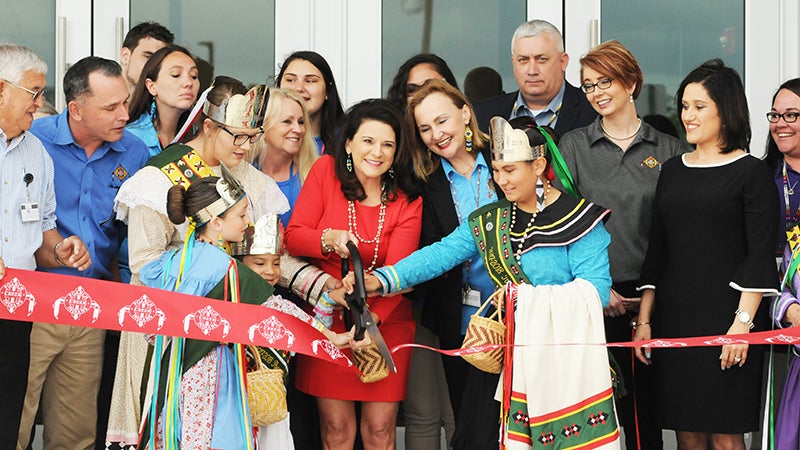A grand opening
Published 12:04 am Wednesday, March 7, 2018

- Tribal Chairman and CEO Stephanie Bryan (center) cuts the ribbon for the Poarch Creek Community Center on March 1. | Andrew Garner/Atmore Advance
PCI opens 71,000-square-foot community center
Dreams are continuing to become reality for the Poarch Creek Indians.
On March 1, PCI held a ribbon cutting to open its Poarch Creek Community Center (PCCC) on the Tribe’s reservation.
The new facility, which was built on old fish ponds on Martin Road in Poarch, was designed to help develop and guide area youth to become successful adults.
“What happens here will have a lasting impact, not only on the current generation, but on the next seven generations,” Tribal Chairman and CEO Stephanie Bryan said at the ribbon cutting. “It takes a Tribe to raise a child.”
The project, which cost $20 million to build, houses the Tribe’s Boys and Girls Club as well as the Tribal Government’s Education and Cultural Departments, which are a part of the Poarch Creek Community Services Division. The new community center houses several shared spaces designed to be used by people of all ages, including an auditorium/multipurpose room, a dining area, classrooms, teaching kitchen, pottery studio, sewing studio, an outdoor classroom and recreation spaces.
The PCCC building is 71,000 square feet, and was designed to Risk Category IV for wind speeds up to 149 miles per hour. The dining room can act as a safe room as it can withstand wind speeds up to 200 miles per hour, according to a press release.
The biggest section of the building houses the Boys and Girls Club at just over 13,000 square feet.
Each department has separate features that cater to its function within the Tribe.
Construction began in September 2016, and PCCC employs more than 75 staff. The community center is slated to become a multi-generational meeting place of the Poarch community.
Rolin Construction was the general contractor for the project, and the architectural firm of Caldwell Associates designed it.
“This project presented an opportunity to help create a building that would become the centerpiece of reservation life — a community ‘hearth’ where their story could be retold and where their traditions could be passed from one generation to the next,” Michael Crawford, a partner with Caldwell Associates said.



